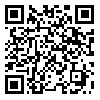Sun, May 11, 2025
[Archive]
Volume 34, Issue 1 (2-2020)
Med J Islam Repub Iran 2020 |
Back to browse issues page
Download citation:
BibTeX | RIS | EndNote | Medlars | ProCite | Reference Manager | RefWorks
Send citation to:



BibTeX | RIS | EndNote | Medlars | ProCite | Reference Manager | RefWorks
Send citation to:
Panahi M H, Parsaeian M, Mansournia M A, Khoshabi M, Gouya M M, Hemmati P et al . A spatio-temporal analysis of influenza-like illness in Iran from 2011 to 2016. Med J Islam Repub Iran 2020; 34 (1) :464-469
URL: http://mjiri.iums.ac.ir/article-1-5942-en.html
URL: http://mjiri.iums.ac.ir/article-1-5942-en.html
Mohammad Hossein Panahi 

 , Mahboubeh Parsaeian
, Mahboubeh Parsaeian 

 , Mohammad Ali Mansournia
, Mohammad Ali Mansournia 

 , Mostafa Khoshabi
, Mostafa Khoshabi 

 , Mohammad Mehdi Gouya
, Mohammad Mehdi Gouya 

 , Payman Hemmati
, Payman Hemmati 

 , Akbar Fotouhi
, Akbar Fotouhi 




 , Mahboubeh Parsaeian
, Mahboubeh Parsaeian 

 , Mohammad Ali Mansournia
, Mohammad Ali Mansournia 

 , Mostafa Khoshabi
, Mostafa Khoshabi 

 , Mohammad Mehdi Gouya
, Mohammad Mehdi Gouya 

 , Payman Hemmati
, Payman Hemmati 

 , Akbar Fotouhi
, Akbar Fotouhi 


Epidemiology and Biostatistics Department, School of Public Health, Tehran University of Medical Sciences, Tehran, Iran , afotouhi@tums.ac.ir
Abstract: (2046 Views)
Background: Investigating the spatial aspects of the disease can help decision-makers and researchers better understand the pattern of the disease, and is also very important in the implementation of the disease control programs. Given the vast area of Iran, as well as the diverse geographical and climate conditions of the country, using the geographical information system (GIS) is a suitable method for the study of influenza. In this study, we provide a clear picture of the distribution of the influenza-like illness (ILI) in Iranian provinces through the years from 2011 to 2016 by applying a spatio-temporal analysis, using geographic information system (GIS). Disease rates by location and year are estimated, and then hot spots and cold spots are distinguished.
Methods: This study was conducted using the ILI incidence rate data recorded in the Iranian Influenza Surveillance System from August 2011 to August 2016. The Choropleth map method and the various equal interval and natural break classifications were used. The local Getis-Ord Gi* method was then used to identify the hot spots and regions where, for some reason, the distribution of the disease had significantly clustered spatially. Statistical analyses were done using the ArcGIS 10.2 software.
Results: This study indicates that the highest ILI rate belongs to the period from August 2014 to August 2015 with a rate of 180.26 (95%CI: 177.65 to 182.9) per 100,000 people. The results show that the highest 5-year mean of ILI rate belongs to Zanjan, Markazi, Lorestan, Ilam, North Khorasan, and South Khorasan provinces. Also, results from the local Getis-Ord Gi* method show that ILI has formed a hot spot between the years 2011 and 2013 on the eastern borders of Iran and afterward during the years 2014 to 2016 in the western regions of the country.
Conclusion: Given the importance of influenza and its huge economic burden on the society, identifying the hot spot regions can help better manage the disease. This study indicates the distribution of the disease has formed a hot spot in the western regions of the country.
Methods: This study was conducted using the ILI incidence rate data recorded in the Iranian Influenza Surveillance System from August 2011 to August 2016. The Choropleth map method and the various equal interval and natural break classifications were used. The local Getis-Ord Gi* method was then used to identify the hot spots and regions where, for some reason, the distribution of the disease had significantly clustered spatially. Statistical analyses were done using the ArcGIS 10.2 software.
Results: This study indicates that the highest ILI rate belongs to the period from August 2014 to August 2015 with a rate of 180.26 (95%CI: 177.65 to 182.9) per 100,000 people. The results show that the highest 5-year mean of ILI rate belongs to Zanjan, Markazi, Lorestan, Ilam, North Khorasan, and South Khorasan provinces. Also, results from the local Getis-Ord Gi* method show that ILI has formed a hot spot between the years 2011 and 2013 on the eastern borders of Iran and afterward during the years 2014 to 2016 in the western regions of the country.
Conclusion: Given the importance of influenza and its huge economic burden on the society, identifying the hot spot regions can help better manage the disease. This study indicates the distribution of the disease has formed a hot spot in the western regions of the country.
Type of Study: Original Research |
Subject:
Epidemiology
Send email to the article author
| Rights and permissions | |
 |
This work is licensed under a Creative Commons Attribution-NonCommercial 4.0 International License. |





